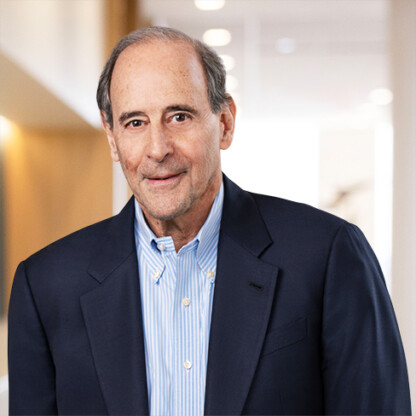Of Tuna Price-Fixing Conspiracies, Econometric Regressions, and the Ninth Circuit’s Latest Guidance on Class Certification

Last week, the United States Court of Appeals for the Ninth Circuit issued a decision vacating a district court order certifying three plaintiff classes pursuing damages for alleged price-fixing conspiracies in the tuna industry. Olean Wholesale Grocery Coop., Inc. v. Bumble Bee Foods LLC, Case No. 19-56514, — F.3d –, 2021 WL 1257845 (9th Cir. Apr. 6, 2021). Although the decision addresses issues regarding antitrust injury and the use of econometric models to prove antitrust impact, its reach goes beyond the antitrust context to class litigation generally in the Ninth Circuit.
Background
The plaintiffs in Olean, purchasers of tuna products, sought certification of three discrete classes: those who purchased directly from the defendants (the “Direct Purchaser” class); those who purchased wholesale from specific retailers (the “Commercial Food Service Product” class); and individual consumers who purchased for end consumption (the “End Payer” class). Each plaintiff class alleged that the defendants—the three largest domestic producers of packaged tuna—colluded to fix prices, limit promotional activity, and exchange confidential business information with one another.
During the class certification proceedings, the plaintiffs presented expert econometric evidence purporting to show that the defendants’ alleged conspiracy “harmed all, or nearly all, of the Class members.” The plaintiffs’ expert first calculated a “but for” price (i.e., the price for wholesale tuna that would have existed absent the alleged conspiracy) using a regression model that attempted to control for the non-conspiracy-related explanatory variables affecting pricing. This model estimated an average overcharge of 10.28%. The plaintiffs’ expert also concluded that 94.5% of class members were injured by the defendants’ alleged anticompetitive conduct.
The defendants countered with evidence from another econometrician, who critiqued the use of an average overcharge model as simply assuming away the individualized injury questions. In his rebuttal report, the defendants’ expert opined (based on his regression analysis) that 28% of class members did not pay any overcharge and, therefore, suffered no injury. He also pointed out that the model used by the plaintiffs’ expert identified numerous “false positives,” finding overcharges during both the pre- and post-conspiracy benchmark periods and on sales made by producers not named as defendants.
The district court acknowledged that the criticisms lodged by the defendants and their expert were “serious and could be persuasive to a finder of fact” but concluded that weighing the credibility of the parties’ competing experts was “beyond the scope” of resolving the plaintiffs’ class certification motion. Because the district court did not find that the plaintiffs’ expert report was “unreliable or incapable of proving impact on a class-wide basis,” it ruled that plaintiffs had sufficiently met the Rule 23(b)(3) predominance requirement and certified all three classes. The Ninth Circuit granted the defendants’ petition for interlocutory review.
The Burden of Proof on Class Certification
Perhaps the clearest holding in Olean addresses the burden of proof at the class certification stage for “predominance” under Rule 23(b)(3). The Supreme Court has directed district courts to perform a “rigorous analysis” of Rule 23(b)(3)’s requirement that “common questions predominate over individual ones.” Comcast Corp. v. Behrend, 569 U.S. 27, 35 (2013). Ninth Circuit precedent already established that such an analysis involves “judging the persuasiveness of the evidence presented” in favor and against class certification. Ellis v. Costco Wholesale Corp., 657 F.3d 970, 982 (9th Cir. 2011).
The Olean decision, however, takes this analysis one step further. The Ninth Circuit had not previously resolved the burden of proof at the class certification stage. Here, the Ninth Circuit affirmatively joined several other circuit courts of appeals in “hold[ing] that a district court must find by a preponderance of the evidence that the plaintiff has established predominance under Rule 23(b)(3).” Slip op. at 16 (collecting cases).
The court concluded that the preponderance of the evidence standard comported with the district courts’ recognized role as “gatekeepers” of Rule 23’s class certification requirements and the Supreme Court’s directive to conduct a “rigorous analysis” to ensure that the requirements of Rule 23 are in fact satisfied. Slip op. at 17 (quoting Wal-Mart Stores, Inc. v. Dukes, 564 U.S. 338, 349–51 (2011)). The Ninth Circuit also relied on the text of Rule 23 itself, which requires district courts to “find” that questions of law or fact common to class members predominate over individualized inquiries. In short, the party seeking class certification must affirmatively prove—with supporting evidence—that common questions predominate over individualized ones.
Use of Representative Statistical Evidence
Applying the Supreme Court’s decision in Tyson Foods, Inc. v. Bouaphakeo, 136 S. Ct. 1036, 1048 (2016), the Ninth Circuit accepted (as a general matter) the plaintiffs’ effort to use representative evidence, such as average overcharges derived from an econometric regression, to demonstrate Rule 23(b)(3) predominance. While cautioning that courts must “be wary of overreliance on statistical evidence to establish classwide liability,” slip op. at 19, and reminding district courts to “closely and carefully scrutinize[ ]” representative evidence to ensure “actual … conformance” with Rule 23’s requirements, slip op. at 21, the Ninth Circuit refused to adopt a rule barring the use of average-based statistical evidence to establish compliance with Rule 23(b)(3)’s predominance requirement.
The Ninth Circuit noted that the use of statistical evidence to prove injury and damages is commonplace in antitrust actions, where plaintiffs typically compare the actual prices they paid to statistical estimates of the prices that they would have paid absent the defendants’ allegedly anticompetitive conduct. Because each class member could have relied on the model presented by the plaintiffs’ expert to establish individual antitrust injury and damages, and because the expert’s model linked such injuries and damages to the antitrust violations alleged, the Ninth Circuit found the evidence competent to establish Rule 23(b)(3) predominance. The court concluded that it saw “no issue with Plaintiffs’ use of averaging assumptions in its regression models” and reiterated its precedents holding that individualized damages calculations cannot, by themselves, defeat class certification. Slip op. at 26–27.
District Courts’ Duty to Resolve Expert Disputes at Class Certification
The Ninth Circuit’s decision, however, does not stop there. The court stressed that “[s]tatistical evidence is not a talisman” and made clear that district courts must resolve factual disputes in order to determinate whether “predominance has in fact been met.” Slip op. at 28. In the case before it, the court highlighted the disagreement between the parties about whether the econometric model presented by the plaintiffs’ expert “sweeps in uninjured class members.” The Ninth Circuit noted that, if the plaintiffs’ model attributed injuries to a substantial number of class members who had in fact sustained none, then individualized determinations on that issue would predominate and defeat certification under Rule 23(b)(3).
The Ninth Circuit held that the district court abused its discretion in declining to resolve the parties’ competing expert claims regarding the reliability of the plaintiffs’ model. In other words, “[i]f Plaintiffs’ model indeed shows that more than one-fourth of the class may have suffered no injury at all, the district court cannot find by a preponderance of the evidence ‘that questions of law or fact common to the class members predominate over any questions affecting only individual members.’” Slip op. at 30–31 (quoting Fed. R. Civ. P. 23(b)(3)).
The Ninth Circuit declined to establish a bright-line standard for determining what percentage of uninjured class members might be considered “de minimis” and thus insufficient to defeat class certification, but it emphasized that district courts must make factual findings on such issues pertinent to class certification. As the court explained, whether Rule 23’s requirements for class certification have been satisfied “cannot be outsourced to a jury.” Slip op. at 28. The Ninth Circuit’s instructions to the district court on remand were to “resolve the factual disputes concerning the number of uninjured parties in each proposed class before determining predominance.” Slip op. at 35.
Takeaways
The Olean decision clarified how the Ninth Circuit views the burden of proof on class certification motions and district courts’ duty to resolve competing expert evidence in assessing whether Rule 23’s requirements are satisfied. Parties opposing a class certification motion will cite Olean to support the proposition that courts must rigorously assess the underlying evidence submitted and resolve disputes between the parties’ competing experts, as well as critical factual and legal differences that impact whether the Rule 23 requirements are met. For example, false advertising actions brought under California’s Unfair Competition Law (Cal. Bus. & Prof. Code § 17200), False Advertising Laws (Cal. Bus. & Prof. Code § 17500), and Consumers Legal Remedies Act (Cal. Civ. Code § 1750 et seq.) often involve questions of class-wide materiality and uniform exposure, as well as whether the plaintiff’s proposed damages model aligns with their underlying liability claim. See, e.g., Daniel v. Ford Motor Co., 806 F.3d 1217, 1225 (9th Cir. 2015); Berger v. Home Depot USA, Inc., 741 F.3d 1061, 1068 (9th Cir. 2014); Krommenhock v. Post Foods, LLC, 334 F.R.D. 552, 565 (N.D. Cal. 2020). Expert witnesses for each side using consumer surveys, conjoint studies, or simply relying on professional marketing or advertising experience often present conflicting opinions and analyses that now will likely have to be resolved by the district court at the class certification stage. See, e.g., Hadley v. Kellogg Sales Co., 324 F. Supp. 3d 1084, 1105–11 (N.D. Cal. 2018); In re 5-Hour Energy Mktg. & Sales Pracs. Litig., 2017 WL 2559615, at *8–9 (C.D. Cal. June 7, 2017); In re NJOY, Inc. Consumer Class Action Litig., 120 F. Supp. 3d 1050, 1120–22 (C.D. Cal. 2015). Case law suggesting that doubts should be resolved in favor of class certification given the preliminary nature of the ruling may no longer hold sway in some situations. See, e.g., Wolph v. Acer America Corp., 272 F.R.D. 477, 481 (N.D. Cal. 2011); see also In re Live Concert Antitrust Litig., 247 F.R.D. 98 (C.D. Cal. 2007). On the other hand, those seeking class certification may emphasize the Olean decision’s acceptance of representative evidence in establishing Rule 23(b)(3) predominance under the Supreme Court’s guidance in Tyson Foods.
As a practical matter, district courts retain considerable discretion to decide the class certification question, but they will have to assess the evidence necessary to make findings of fact before concluding whether all Rule 23’s requirements for class certification have been met.


